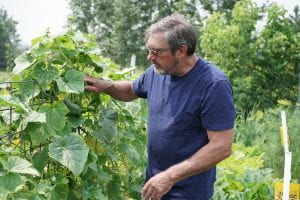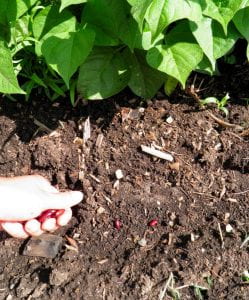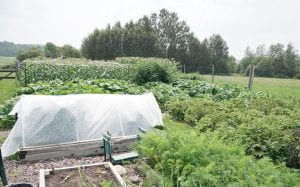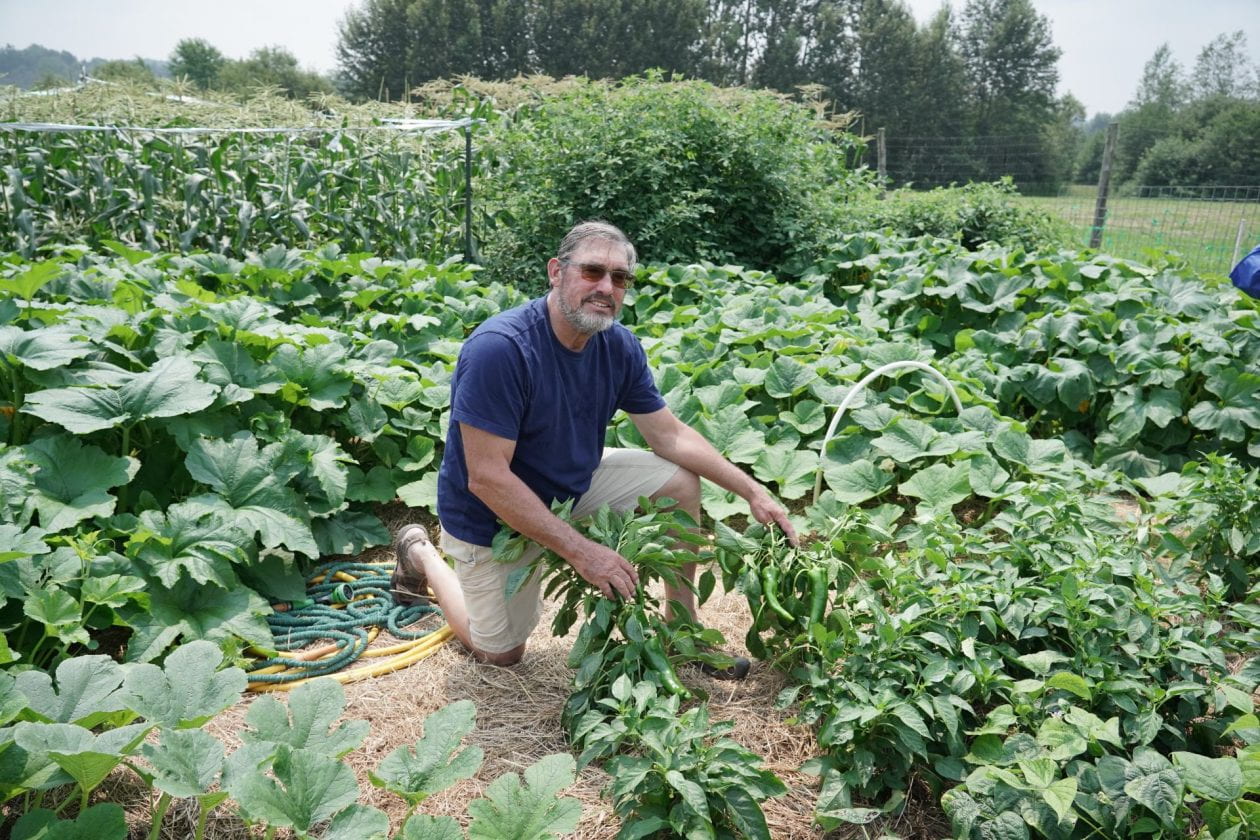Mid-July and August are a great time to be a gardener. Many Of our crops are in full production and vegetables such as lettuce, scallions, peas, beans and beets have become a regular part of our table fare. Our early broccoli and cauliflower are finishing up as we eagerly anticipate harvesting our first cucumbers, new potatoes, and (yes!) ripe tomatoes. Yet even as we celebrate our summer harvest, we can look forward to continuing this harvest into late summer and throughout the fall by succession planting. Succession planting is a method that creates a continuous and extended harvest through seeding and planting multiple times in the spring and summer. This method is a valuable way to make efficient use of limited garden space and the limited growing season available to North Country gardeners.
You may have noticed over the past few weeks that your lettuce and spinach are becoming bitter and sending up flower stalks. We call this process “bolting.” Likewise, unharvested broccoli heads will suddenly open up with yellow flowers and cauliflower heads will lose all their appeal… now is the time to replant parts of the garden to secure a fall harvest. Vegetable plants that are over-mature, or no longer producing or inedible should be pulled and composted to make space for your fall crops.
What can you plant in mid-July? You can start summer cucurbits like yellow squash, zucchinis, and cucumbers; brassicas like broccoli, cauliflower and kale; as well as many direct seeded veggies like bush beans, spinach, lettuce, carrots, beets, radishes and peas. Read on for information on starting each of these for fall.

If you’ve noticed that the productivity of your plants in the summer squash family (cucumbers, crooknecks, and zucchinis) is dropping off quickly, it’s because these plants are only heavy producers for two or three weeks before production wanes and eventually comes to an end. If you’ve never tried growing a second crop of cucurbits, why not give it a try? While summer squash, zucchinis and cucumbers can be directly seeded into the ground, you may have better luck starting them in seedling containers with potting mix on an outdoor table or porch (or indoors if you have adequate artificial lighting). Keep a close eye on them and water frequently if they are outdoors, daily if they are in full sun. Transplant them into the garden after about three weeks to get a leg up on the weeds which are growing fast this time of year.
Brassicas like broccoli, cauliflower, and kale prefer cooler temperatures for germination. Start them in containers indoors or in a shady spot, shooting for 65-75 degrees. Hot, dry conditions and competition with weeds can make germination and early plant growth challenging this time of year so starting seedlings in containers is one way to have more control over the conditions that matter most for germination – temperature and water.

Your succession planting can also include direct seeded veggies, like bush beans, spinach, lettuce, carrots, beets, radishes, peas and other crops that will either mature by first frost (usually towards the end of September) or which can tolerate frost and cool nights of the fall (like lettuce and spinach). Carrots should be seeded around the third week of July, yielding a harvest that extends to the first snow!
Direct seeding of many crops in the heat of July can result in poor germination and crop failure. There are a few ways to increase your success. One is to seed more heavily than the seed packet recommends to adjust for the possibility of a poor germination rate. Remember, you can always thin plants if germination is successful. Pea seeds should be soaked for 24 hours before planting to prime them for germination, or even sprout them indoors in a damp paper towel before planting out. From my experience, even a few peas in the fall are appreciated in salads or a stir fry.
With all direct seeding, be sure to keep the soil moist, watering at least once a day in hot weather until germination occurs. You can also increase your germination success by covering your seeded area with “row cover”, an agricultural fabric which cools the soil and holds in moisture. Row cover can also be used to protect plants from pests. I’m a big fan of growing broccoli, cauliflower and cucumbers under row cover as it protects cucumbers from cucumber beetles, and broccoli and cauliflower from Swede midge, cabbage moths and flea beetles. Row covers over anything in the squash family will need to be removed once flowering begins to enable pollination to occur.

If you’ve never tried using row cover fabric, give it a try, I’m sure you’ll be pleased with the results. Row covers are also great to use in the fall when the first frosts occur. In the North Country, we often will have one or two nights of frost followed by 2 or 3 weeks with no frost, so covering sensitive crops with row covers can significantly extend your harvest of peppers, tomatoes and other frost-sensitive vegetables. While the initial purchase of a row cover can seem expensive, I use mine for multiple growing seasons which spreads out the cost over many years (and crops).
Happy Fall Gardening!
Have questions about gardening, insect pests, your lawn, fruit trees or berries? Master gardeners are here to answer your questions and help solve your gardening problems. Send your questions to the St. Lawrence County Extension’s Growline at: SLCgrowline@gmail.com.
